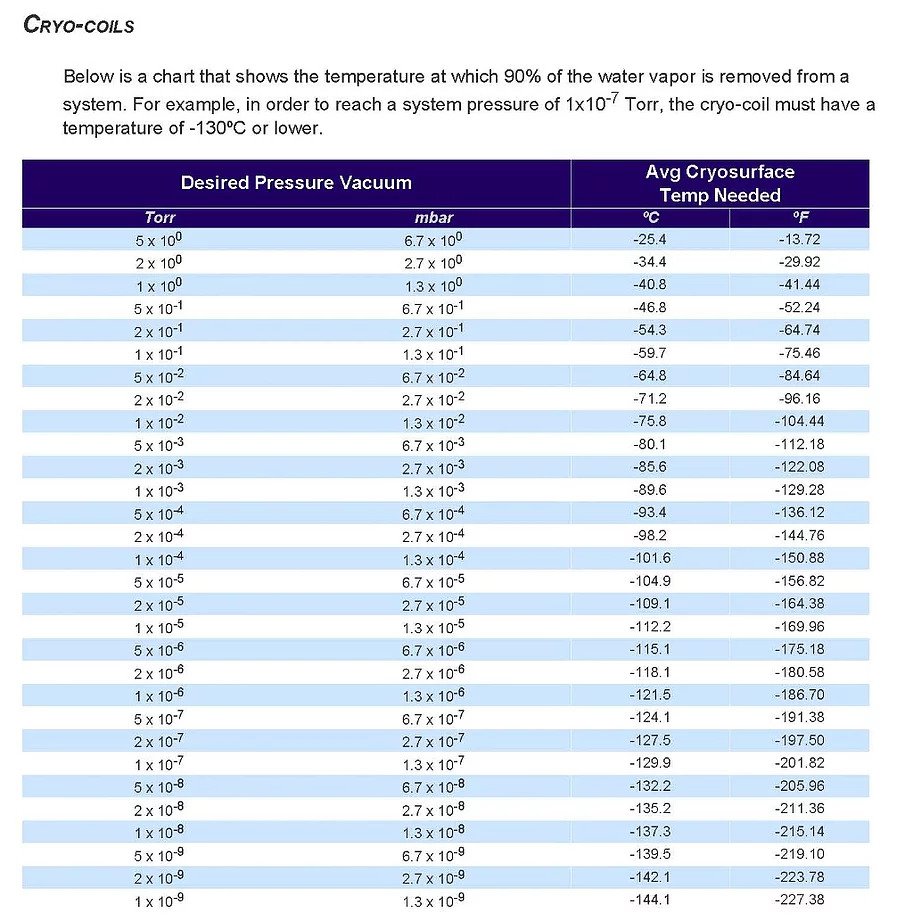Technical Information

Multi-coolant Baffles
GNB designs multi-coolant baffles with or without flanges for durability and performance with your choice of copper, stainless, or aluminum chevrons or louvers. Choose from our variety of standard sizes and features or contact us for custom options.
Liquid Nitrogen Traps
GNB Liquid Nitrogen Traps use a GNB proven 5-bounce baffle design, plus a liquid nitrogen reservoir to make an LNT that stops oil back streamng and provides up to 12 hours of cooling per fill. Another feature of GNB’s design is that you can remove the baffle without removing its housing.
Also GNB’s design uses the shortest flange to flange distance helping reduce conductance losses over other style LNTs. With over 40 years experience builidng LNT traps, GNB is a proven leader with this vacuum component and many others.

Conductance
Because a baffle adds restriction between the pump and the vacuum chamber, it may reduce the ability of the pumping system. This reduction in conductance depends on a large number of factors such as the pressure in the vacuum system (molecular vs. laminar flow), the type of gas and the temperature of the baffle.
In the high vacuum range, an optically dense chevron style baffle that is placed between a chamber and a vacuum pump will reduce the pumping speed by roughly 50%. However, if its surface temperature is cold, it will also increase the pumping speed of the system because it will pull water vapor out of the system. The interacting factors make it difficult to calculate the overall pumping speed. For example, testing that was completed on an actual production system showed that removing a diffusion pump cold head and replacing it with GNB’s chevron style baffle only reduced the pumping speed by 13% while decreasing oil backstreaming by 94%.
Limitations for Baffles and Cryo-coils
- A baffle should not be positioned above a turbo pump. When a baffle warms, moisture may drip from it, and most turbo pump manufacturers do not allow water dripping into their pumps.
- A baffle or trap should not be used for applications that generate large amounts of vapors that will condense at the temperature of the baffle. When this is the case, the baffle will “ice” quickly and become ineffective.
- A baffle should not be used if the conductance of the pumps is marginal. A baffle that is placed in front of a pump will reduce the pumping speed.
- Baffles and cryo-coils should be used with caution whenever they are exposed to a hot process. Although, the initial pump down type can be shortened, the hot process may free the trapped moisture and increase the gas load while the process is hot. You may consider hiding the baffle behind a heat shield or valve while the process is hot.
GNB has the experience you need to help select the right vacuum system components. Our ISO 9000 certified manufacturing facility is able to deliver the highest quality products on-time and at a competitive price. 100% of our baffles are tested to ensure they comply with our rigorous performance requirements.
Instructions for Using Baffles
- A baffle must always have an unrestricted exit line. If the exit is blocked and the baffle is allowed to warm, the expansion of the liquid and/or gas inside can cause dangerous pressures to develop.
- A baffle should not be positioned above a turbo pump or other equipment that cannot tolerate water. When a baffle warms, moisture may drip from it.
- A baffle or trap should not be used for applications that generate large amounts of vapors that will condense at the temperature of the baffle. When this is the case, the baffle will “ice” quickly and become ineffective.
- A baffle should not be used if the conductance of the pumps is marginal. A baffle that is placed in front of a pump may reduce the pumping speed.
- Baffles and cryo-coils should be used with caution whenever they are exposed to a hot process. Although the initial pump-down time can be shortened, the hot process may free the trapped moisture and increase the gas load while the process is hot. You may consider hiding the baffle behind a heat shield or valve while the process is hot.
